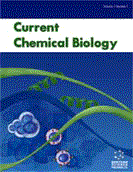Abstract
Drug repositioning invovles exploring novel usages for existing drugs. It plays an important role in drug discovery, especially in the pre-clinical stages. Compared with the traditional drug discovery approaches, computational approaches can save time and reduce cost significantly. Since drug repositioning relies on existing drug-, disease-, and target-centric data, many machine learning (ML) approaches have been proposed to extract useful information from multiple data resources. Deep learning (DL) is a subset of ML and appears in drug repositioning much later than basic ML. Nevertheless, DL methods have shown great performance in predicting potential drugs in many studies. In this article, we review the commonly used basic ML and DL approaches in drug repositioning. Firstly, the related databases are introduced, while all of them are publicly available for researchers. Two types of preprocessing steps, calculating similarities and constructing networks based on those data, are discussed. Secondly, the basic ML and DL strategies are illustrated separately. Thirdly, we review the latest studies focused on the applications of basic ML and DL in identifying potential drugs through three paths: drug-disease associations, drug-drug interactions, and drug-target interactions. Finally, we discuss the limitations in current studies and suggest several directions of future work to address those limitations.
Keywords: Machine learning, deep learning, drug repositioning, drug-disease association, drug-drug interaction, drug-target interaction.
[http://dx.doi.org/10.4161/sysb.22816]
[http://dx.doi.org/10.3390/proteomes4030028] [PMID: 28248238]
[http://dx.doi.org/10.1038/nrd.2018.168] [PMID: 30310233]
[http://dx.doi.org/10.1016/j.drudis.2013.11.005] [PMID: 24239728]
[http://dx.doi.org/10.1038/nrd3480] [PMID: 21701501]
[http://dx.doi.org/10.1038/clpt.2013.1] [PMID: 23443757]
[http://dx.doi.org/10.2147/DDDT.S129447] [PMID: 28721015]
[http://dx.doi.org/10.1038/nrd.2016.230] [PMID: 27910877]
[http://dx.doi.org/10.1007/978-1-4020-6710-5_3]
[http://dx.doi.org/10.1038/s41598-019-50121-3] [PMID: 31541145]
[http://dx.doi.org/10.3389/fchem.2019.00924] [PMID: 31998700]
[http://dx.doi.org/10.1109/BHI.2019.8834572]
[http://dx.doi.org/10.1186/s12859-020-3518-6] [PMID: 32631230]
[http://dx.doi.org/10.1186/s12859-019-3263-x] [PMID: 31874614]
[http://dx.doi.org/10.1109/TCBB.2020.2977335]
[http://dx.doi.org/10.1093/bioinformatics/btaa1005] [PMID: 33275143]
[http://dx.doi.org/10.1371/journal.pcbi.1007129] [PMID: 31199797]
[http://dx.doi.org/10.1039/D0RA02297G]
[http://dx.doi.org/10.1021/acs.jcim.9b00628] [PMID: 31580672]
[http://dx.doi.org/10.1109/ACCESS.2019.2907522]
[http://dx.doi.org/10.1371/journal.pone.0111668] [PMID: 25356910]
[http://dx.doi.org/10.1371/journal.pone.0196865] [PMID: 29738537]
[http://dx.doi.org/10.1186/s12859-018-2490-x] [PMID: 30463505]
[http://dx.doi.org/10.1186/s12859-020-03682-4] [PMID: 32938396]
[http://dx.doi.org/10.1021/acs.jcim.9b01008] [PMID: 32118415]
[http://dx.doi.org/10.1155/2019/2426958] [PMID: 31534955]
[http://dx.doi.org/10.1186/s12967-019-2127-5] [PMID: 31747915]
[http://dx.doi.org/10.1016/j.ymeth.2020.05.007] [PMID: 32497603]
[http://dx.doi.org/10.1007/s10822-014-9827-y] [PMID: 25527073]
[http://dx.doi.org/10.1089/cmb.2017.0135] [PMID: 28891684]
[http://dx.doi.org/10.1186/s12859-019-3093-x] [PMID: 31874609]
[http://dx.doi.org/10.1093/bioinformatics/btw228] [PMID: 27153662]
[http://dx.doi.org/10.1186/s12859-016-1415-9] [PMID: 28056782]
[http://dx.doi.org/10.1145/2623330.2623732]
[http://dx.doi.org/10.1038/s41467-017-00680-8] [PMID: 28924171]
[http://dx.doi.org/10.1186/s12859-018-2199-x] [PMID: 29897326]
[http://dx.doi.org/10.3389/fgene.2019.00459] [PMID: 31214240]
[http://dx.doi.org/10.1109/EMBC44109.2020.9176165]
[http://dx.doi.org/10.3389/fphar.2019.01592] [PMID: 32047432]
[http://dx.doi.org/10.1186/s12859-019-2811-8] [PMID: 31138103]
[http://dx.doi.org/10.1186/s12859-019-3214-6] [PMID: 31870276]
[http://dx.doi.org/10.1111/jcpt.12786] [PMID: 30565313]
[http://dx.doi.org/10.1109/ECTICon.2015.7207126]
[http://dx.doi.org/10.1016/j.ymeth.2018.06.001] [PMID: 29879508]
[http://dx.doi.org/10.1016/j.knosys.2020.106585]
[http://dx.doi.org/10.1186/s12859-019-3013-0] [PMID: 31387547]
[http://dx.doi.org/10.1039/C9SC04336E] [PMID: 34123272]
[http://dx.doi.org/10.1093/bioinformatics/btaa010] [PMID: 31971579]
[http://dx.doi.org/10.1021/acs.jproteome.6b00618] [PMID: 28264154]
[http://dx.doi.org/10.1186/s12859-020-03950-3] [PMID: 33482713]
[http://dx.doi.org/10.1073/pnas.1803294115] [PMID: 29666228]
[http://dx.doi.org/10.1049/iet-syb.2019.0116] [PMID: 32737279]
[http://dx.doi.org/10.1093/bioinformatics/btaa501] [PMID: 32407508]
[http://dx.doi.org/10.1186/s12859-020-03724-x] [PMID: 32972364]
[http://dx.doi.org/10.1093/bioinformatics/bty593] [PMID: 30423097]
[http://dx.doi.org/10.1093/bib/bbaa044] [PMID: 32367110]
[http://dx.doi.org/10.3390/pharmaceutics11080377] [PMID: 31382356]
[http://dx.doi.org/10.1186/s12859-020-03677-1] [PMID: 32938374]
[http://dx.doi.org/10.3390/cells8070705] [PMID: 31336774]
[http://dx.doi.org/10.3389/fphar.2019.01301] [PMID: 31780934]
[http://dx.doi.org/10.3390/molecules24152712] [PMID: 31349692]
[http://dx.doi.org/10.1109/JBHI.2020.3039502] [PMID: 33216722]
[http://dx.doi.org/10.1093/bioinformatics/btz418] [PMID: 31116390]
[PMID: 24516494]
[http://dx.doi.org/10.1038/79839] [PMID: 11017062]
[http://dx.doi.org/10.1038/35001165] [PMID: 10688178]
[http://dx.doi.org/10.1007/s00726-017-2474-6] [PMID: 28766075]
[http://dx.doi.org/10.1016/j.drudis.2011.09.007] [PMID: 21945861]
[http://dx.doi.org/10.1093/bib/bbz176] [PMID: 32043521]
[http://dx.doi.org/10.2174/138161206777585274] [PMID: 16796559]
[http://dx.doi.org/10.1021/ja036030u] [PMID: 14505407]
[http://dx.doi.org/10.1186/s13321-015-0069-3] [PMID: 26052348]
[http://dx.doi.org/10.1093/bioinformatics/btv373] [PMID: 26088801]
[http://dx.doi.org/10.1126/science.1158140] [PMID: 18621671]
[http://dx.doi.org/10.1093/bioinformatics/bts413] [PMID: 22962489]
[http://dx.doi.org/10.1371/journal.pone.0099415] [PMID: 24932637]
[http://dx.doi.org/10.1126/science.1257601] [PMID: 25700523]
[http://dx.doi.org/10.1093/bioinformatics/btu684] [PMID: 25677125]
[http://dx.doi.org/10.1016/j.jbi.2011.11.017] [PMID: 22166490]
[http://dx.doi.org/10.1186/1479-5876-12-99] [PMID: 24731539]
[http://dx.doi.org/10.1371/journal.pone.0033174] [PMID: 22432004]
[http://dx.doi.org/10.1093/bioinformatics/btv176] [PMID: 25812745]
[http://dx.doi.org/10.1613/jair.514]
[http://dx.doi.org/10.1109/21.97458]
[http://dx.doi.org/10.1002/cem.873]
[http://dx.doi.org/10.1007/BF00058655]
[http://dx.doi.org/10.1023/A:1010933404324]
[http://dx.doi.org/10.1007/978-1-4419-9326-7_11]
[http://dx.doi.org/10.1109/TSMCA.2010.2084081]
[http://dx.doi.org/10.1006/jcss.1997.1504]
[http://dx.doi.org/10.1016/S0167-9473(01)00065-2]
[http://dx.doi.org/10.4249/scholarpedia.1883]
[http://dx.doi.org/10.1073/pnas.79.8.2554] [PMID: 6953413]
[http://dx.doi.org/10.1145/3422622]
[http://dx.doi.org/10.1007/978-3-642-46466-9_18]
[http://dx.doi.org/10.1016/j.media.2019.101552] [PMID: 31521965]
[http://dx.doi.org/10.1109/BIBM47256.2019.8983401]
[PMID: 33152756]
[PMID: 10928714]
[http://dx.doi.org/10.1038/sj.ejhg.5201585] [PMID: 16493445]
[http://dx.doi.org/10.3758/BF03193020] [PMID: 17958162]
[http://dx.doi.org/10.1038/srep21106] [PMID: 26880032]
[http://dx.doi.org/10.1038/msb.2011.26] [PMID: 21654673]
[http://dx.doi.org/10.1021/ci00057a005]
[http://dx.doi.org/10.1038/ncomms5212] [PMID: 24967666]
[http://dx.doi.org/10.1109/BIBM47256.2019.8983257]
[http://dx.doi.org/10.1093/bib/bbaa243] [PMID: 33078832]
[http://dx.doi.org/10.1126/science.1132939] [PMID: 17008526]
[http://dx.doi.org/10.1038/nrc2044] [PMID: 17186018]
[http://dx.doi.org/10.1136/amiajnl-2012-001431] [PMID: 23576672]
[http://dx.doi.org/10.1016/j.jbi.2017.04.021] [PMID: 28465082]
[http://dx.doi.org/10.1007/s12652-018-0960-7]
[http://dx.doi.org/10.1109/TCYB.2014.2307349] [PMID: 25415946]
[http://dx.doi.org/10.1093/bioinformatics/btx731] [PMID: 29186331]
[http://dx.doi.org/10.1038/nmeth.2810] [PMID: 24464287]
[http://dx.doi.org/10.1111/cbdd.12378] [PMID: 24934184]
[http://dx.doi.org/10.1016/j.compbiolchem.2018.04.011] [PMID: 29730365]
[http://dx.doi.org/10.1109/MCAS.2006.1688199]
[http://dx.doi.org/10.1145/3307339.3342136]
[http://dx.doi.org/10.24963/ijcai.2020/380]
[PMID: 17708140]
[http://dx.doi.org/10.1093/bib/bbz152] [PMID: 31885041]
[http://dx.doi.org/10.1101/2020.07.29.218826v1]
[http://dx.doi.org/10.1093/bioinformatics/btx160] [PMID: 28430977]
[http://dx.doi.org/10.1371/journal.pcbi.1002503] [PMID: 22589709]
[http://dx.doi.org/10.1093/bioinformatics/btv256] [PMID: 26072486]
[http://dx.doi.org/10.18637/jss.v033.i01] [PMID: 20808728]
[http://dx.doi.org/10.1016/j.compbiolchem.2019.03.016] [PMID: 30939415]
[http://dx.doi.org/10.1002/jcc.21707] [PMID: 21425294]
[http://dx.doi.org/10.1093/nar/28.1.374] [PMID: 10592278]
[http://dx.doi.org/10.1093/bioinformatics/bty1036] [PMID: 30590407]
[http://dx.doi.org/10.1021/acs.jcim.9b00387] [PMID: 31443612]
[http://dx.doi.org/10.1016/j.cell.2017.10.049] [PMID: 29195078]
[http://dx.doi.org/10.1093/nar/gky1131] [PMID: 30476243]
[http://dx.doi.org/10.1093/bioinformatics/btr260] [PMID: 21546393]
[http://dx.doi.org/10.1016/j.csbj.2020.03.025] [PMID: 32280433]
[http://dx.doi.org/10.1038/s41422-020-0282-0] [PMID: 32020029]
[http://dx.doi.org/10.1109/ICDM.2003.1250918]
[http://dx.doi.org/10.1016/j.neucom.2016.03.080]
[http://dx.doi.org/10.1038/s42256-019-0048-x]






























